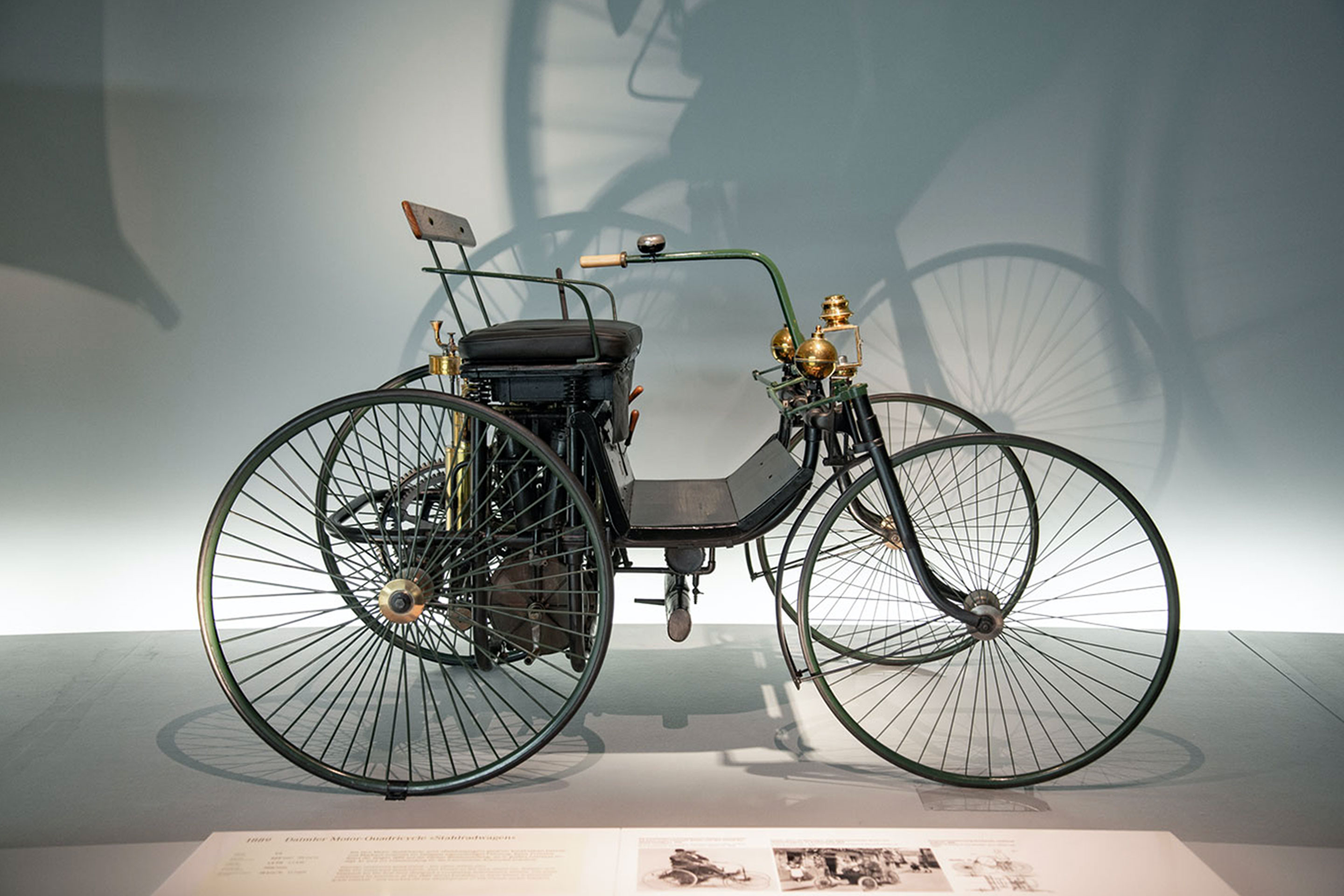As we’ve previously discussed, Etienne Lenoir made a huge difference in the development of the internal combustion engine, and his work would directly affect one Nikolaus August Otto, a young German salesperson. During his travels, Otto became acquainted with the first internal combustion engine built by Lenoir, and what Otto would develop still remains relevant in today’s internal combustion engines.
Otto and his brother built a copy of the Lenoir gas engine and applied for a patent in January 1861 for a liquid fueled engine with the Prussian Ministry of Commerce. But it was rejected. Lenoir was at the time already proposing the idea of the carburetor for liquid fuels.
It is said that Otto was already aware of the interest in pre-compressing the air-fuel mixture before ignition. Did he take this point from thermodynamics, or was he in contact with Lenoir himself, who at this point of time was being advised by Beau de Rochas? Or did he already know about Reithmann? However it happened, Otto began testing his first 4-stroke engine – based on the Lenoir engine – during the early 1860s. After few minutes of operation, the engine broke, along with the partnership between Otto and his brother.
Otto sought investors to fund his research and found Eugen Langen, whose father was industrialist.
Langen was a young German entrepreneur, engineer and inventor. His own scientific knowledge enabled him to recognize Otto’s great abilities and he decided to join forces with him to develop the first engine factory in continental Europe, N. A. Otto & Cie. Beside his involvement in the development of the combustion engine, Langen developed a method for producing sugar cubes at his father’s company (1857), and would later become the father of the famous Wuppertal Suspension Railway, called the ‘Schwebebahn’, in the 1890s.
Together, Otto and Langen built their first atmospheric engine in 1864, which was quite similar to the one built and patented by Eugenio Barsanti and Felice Matteucci a few years before. At the World Exhibition in Paris in 1867, Otto and Langen’s engine was favored over other gas engines. After measuring the gas consumption, the jury awarded the Grand Prix to the German engine since it required less than half the gas of other engines.
N. A. Otto & Cie would eventually go bankrupt, but Langen raised enough capital to recreate a new company in Deutz, near Cologne, devoted to the manufacture of gas engines. This company, Gasmotorenfabrik Deutz, would later become the industrial group Klöckner-Humboldt-Deutz (KHD), and finally Deutz AG. Eugen Langen also hired two engineers whose names can still be found on automobiles today, Gottlieb Daimler and Wilhelm Maybach, to take care of production and give Otto enough time to fulfill his original dream of building a robust 4-stroke engine. Note that, in addition to Langen, Otto, Daimler and Maybach, some other very famous people would later work for Deutz, including Prosper L’Orange (from 1904 until October 1908), Ettore Bugatti (in 1907), and Robert Bosch.
Developing the Otto Cycle
In 1876, Otto developed a gaseous fuel, compressed charge 4-stroke cycle that would become known as the Otto-Cycle. This is the principle that still powers most car engines today. He based an engine on this cycle after 14 years of effort: it is a system characterized by four piston strokes (intake, compression, expansion-power and exhaust), under two engine revolutions.
In France, Etienne Lenoir also worked on a 4-stroke version of the gas engine during his retirement, which he patented in early 1880s. This engine was produced by Mignon & Rouart and Compagnie Parisienne du Gaz from 1894. Lenoir recognized the work from Otto, but he was already advised earlier to move in this direction by his partner Beau de Rochas (who never built any engine by himself).
The transition from internal combustion without pre-compression to the 4-stroke cycle with pre-compression allowed efficiency to grow from slightly less than 5% to 15% between 1880 and the 1890s.
It wasn’t all smooth sailing, however, and after a certain time, serious personal differences arose between Daimler and Otto. After some patent battles, Daimler and Maybach started developing engines for automobiles based on Otto’s 4-stroke engine, while also increasing the operational speed up to 650 rpm, which allowed a power density that was ideal for such applications. Several vehicles were built during the 1880 and 90s.
At the end of the 1890s, the duo developed a car for Austrian businessman Emil Jellinek, the body of which represented a significant departure from the previous carriage principle, and whose 35hp engine propelled the car along at a top speed of nearly 90 km/h. The car was named after Jellinek’s daughter, named Mercedes. But that is another story…
The Otto Cycle
Often in the literature, the spark ignition four-stroke cycle – still widely employed in most cars today – is called the ‘Otto cycle’, mainly thanks to the fact that N.A. Otto is credited with being the first to make such engine operation possible. In France, this cycle is called the ‘Beau de Rochas cycle’, but it could also be called the ‘Reithmann cycle’. Whatever the name of the most popular cycle, all three inventors are universal geniuses.
From steam to internal combustion and beyond
We saw how the real transition from steam engines to internal combustion engines took place, although steam would also be used for the next 100 years, both on rail and in large ships.
But internal combustion, spark-ignition and pre-compression were the main axis for these first developments, which allowed the engines to reach 15% efficiency compared to less than 5% for the steam engines of the 19th century.
Where do we go from here; what limits the pre-compression ratio from reaching even better efficiencies, and how can we get rid of such limitations? This will be answered in our next article, where we’re looking at Diesel.














